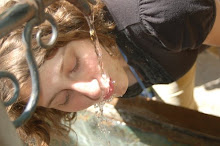In, “Women and Their Hair: Seeking Power through Resistance and Accommodation,” Rose Weitz explains that the body is a site for struggle over power, especially between men and women. Women use their bodies in ways to gain power either by accommodating conventional ideas about beauty or by resisting these norms. Weitz claims that hairstyles are a prime example of this power struggle. Some women seek to gain power by embodying cultural norms about hair, while others seek less feminine, professional styles so that they will be taken more seriously. Similarly, Evelyn Glenn argues in, “Yearning for Lightness: Transnational Circuits in the Marketing of Skin Lighteners,” that light skin operates as a form of symbolic capital, and that women use skin lighteners to climb the social hierarchy. She stresses that women use these skin lighteners in an attempt to achieve conventional ideas of whiter skin color to gain power. While both articles state that ideas of attractiveness vary by region, class, ethnicity, and country, they still operate under the assumption that there is some “ideal” conventional view of beauty. Weitz claims that the traditional view of attractive female hair is long, curly, blonde, and intentionally styled hair. Glenn claims that women seek to achieve white skin. By assuming, however, that there is an “ideal” beauty type, the authors are insinuating that some females could possibly possess these ideal traits and embody this powerful, self-confident woman who has no insecurities about her body. This seems highly unlikely. Instead, I argue there is no sole ideal body type for women, and that beauty is sought by altering one’s natural appearance.
Weitz claims that women with long, curly, blonde, styled hair best fit the conventional idea of beauty. If this were true, it would seem that women with curly hair would not have to do much to style their hair. This is not the case, however. Many women with naturally curly hair spend hours applying straitening lotion and flat ironing their hair until it is strait and smooth. Many females with straight hair, on the other hand, spend money on perms to give volume to their so called dull hair. It does not seem that there is some “ideal” hairstyle, but rather an idea that hair in its natural state is not beautiful. Glenn explains that darker women use skin lighteners in order to achieve this ideal image of whiteness. She briefly mentions tanning, but then quickly moves on saying that this was a craze in the 30’s and 40’s but has largely gone away since the 80’s when sun rays were found to be damaging. Glenn dismisses tanning too quickly without considering how many women still go to tanning beds, as well as products geared toward darkening the skin like spray tans and lotions. Again, it seems that there is no ideal skin tone, merely the idea that one’s natural skin tone is not beautiful enough.
It is obvious that certain norms about beauty do exist. Being overweight, being a minority, and having acne are obviously strikes against ideas of feminine beauty. It is also important not to overlook historical context in which whiter skin has been valued at the expense of those with darker skin. To suggest, however, that there is some ideal type of female beauty suggests that some women are safe from scrutiny. This, however, does not seem to be the case. It is more plausible that there is a looser framework of ideals of femininity, and while some may fit these ideals better than others, no female can be considered the ideal type. Instead, females are conditioned to believe that they are not beautiful naturally, and must substantially alter their bodies in order to achieve this elusive “ideal” type.
Subscribe to:
Post Comments (Atom)

No comments:
Post a Comment